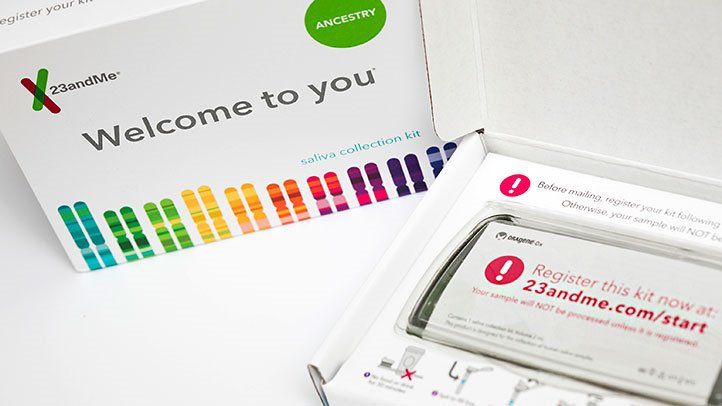Prostate cancer occurs when cells in the tissue of the prostate gland become abnormal and grow out of control. The American Cancer Society projects that approximately 165,000 men will be diagnosed with prostate cancer in 2018, and that 29,000 men will die from the disease. It is the most commonly diagnosed cancer in men and ranks second in male cancer deaths. (1)
How Important Is the Prostate Gland?
The prostate gland is part of the reproductive system. it is important in urinary function and erectile function. The prostate gland surrounds the urethra, the tube that moves urine and semen out of the body. It sits just below the bladder and in front of the rectum. The gland is often described as walnut-shaped, but as men age, it tends to grow significantly bigger.
Fluids made in the prostate gland mix with sperm to create semen, which are important both in reproduction and protecting the urinary tract and sperm from infections. When things go wrong in the prostate gland, problems with urinating can occur.
Learn More About The Prostate Gland
How Common Is Prostate Cancer — and Who Is At Risk?
Prostate cancer most often affects men between ages 55 and 69. There is a huge gap between the proportion of men diagnosed with prostate cancer and those whose health and lifespan are affected by the disease. American men have a 16 percent lifetime risk of developing prostate cancer, but only 2.9 percent of men die from it.
In fact, many prostate cancers are believed to be slow growing, with men dying from causes other than prostate cancer. (2) Autopsy studies support this, finding that 30 percent of 55-year-old men and 60 percent of men reaching age 80 on whom an autopsy is performed have autopsy-discovered prostate cancer. (3)
There are some factors that increase risk for prostate cancer, including:
Race Race seems to play a role in the frequency and severity of the disease. African-American men are far more likely to develop prostate cancer than white men — 203.5 vs. 121.9 cases per 100,000 men. They are also more than twice as likely as white men to die of prostate cancer — 44.1 vs. 19.1 deaths per 100,000 men. (4)
Family History Positive family history of prostate cancer is another risk factor.
Elevated Body Mass Index (BMI) Elevated BMI is another risk factor, linked to an increased risk of prostate-cancer-specific mortality and biochemical (PSA) recurrence in men with prostate cancer. (5)
PSA Screening for Prostate Cancer: A Controversial History
The history of the role of the prostate-specific antigen (PSA) test for prostate cancer is controversial.
The prostate-specific antigen (PSA) blood test was created in the late 1980s, and tests for elevated levels of the antigen. Elevated levels can be suggestive of prostate cancer. The test itself is insufficient for diagnosing prostate cancer and was initially proposed as a marker of prostate cancer recurrence or disease progression. But doctors quickly began using it for cancer screening throughout the United States. By 1992, PSA testing as a cancer screen was at its peak. (4)
Also, in the late 1980s, surgeons in the United States and Europe perfected the technique of radical prostatectomy, which involves removal of the prostate gland and any cancer within it. Initially, it seemed like an ideal situation: Men could have a simple blood test and prostate cancers that had not spread outside of the prostate gland could be cured.
But as time wore on, problems emerged that had not been anticipated when PSA screening was introduced:
- PSA could be raised by infections or other impacts on the prostate.
- Biopsies were needed to confirm the presence of cancer, but it was difficult to distinguish between those cancers that might be aggressive versus those that were slow growing. Many men with low-grade prostate cancers received unnecessarily aggressive intervention.
- Overdiagnosis became a concern. Men were getting treated for prostate cancer even though their cancers were very slow growing and not life-threatening.
- Overtreatment became an issue. Radical prostatectomy and radiation therapy often have side effects, such as urinary, sexual, and bowel problems. These were particularly problematic considering that many men with low-grade prostate cancer may not have needed them.
- Physicians became concerned that these impacts were potentially reducing men’s quality of life without helping extend their lives.
Current PSA Screening Recommendations
PSA-based screening refers to testing healthy men without symptoms.
Until recently, physician societies disagreed on screening recommendations, but with the publication of the U.S. Preventive Services Task Force Guideline in May 2018, all the major physician groups are broadly in agreement, including the American College of Physicians (ACP), the American Cancer Society (ACS), American Urological Association (AUA), and American Society of Clinical Oncology (ASCO):
- They advise supporting men so that they make informed decisions about screening that reflect their personal preferences and values.
- Routine screening is not recommended in men between ages 40 and 54 of average risk.
- For men ages 55 to 69 years, the U.S. Preventive Services Task Force concluded “with moderate certainty that the net benefit of PSA-based screening … is small for some men, making the decision up to the judgment of the physician and the values of the patient."
- For men 70 years and older, they recommend against routine screening because the expected harms are thought to outweigh the benefits.
- Your doctor should not screen you unless you express a preference for it.
- A discussion of the benefits and harms of screening should include a family history of prostate cancer, race or ethnicity, any medical conditions that affect your overall health and lifespan, and your values about risk and benefit.
- If you have less than a 10-year life expectancy, screening is not recommended. (6)
Should Men at Elevated Risk Be Screened More Aggressively?
It might sound logical to screen high-risk men earlier or urge men to adopt a healthy lifestyle to lower their risk for prostate cancer, but these areas have not been studied sufficiently. Therefore, physician organizations recommend more research and individualizing decisions about whether to get screened. Meanwhile, some leading organizations have issued recommendations, including:
- The American Urological Association The AUA recommends individualizing decision-making for men younger than age 55 who are high risk because they are African-American or have a positive family history. (7)
- The U.S. Preventive Services Task Force The USPSTF largely agrees largely with AUA’s position and its 2018 recommendations are based on AUA’s evidence review.
- The American Cancer Society The ACS takes this a step further, urging discussion about screening begin earlier for African-American men and men with first-degree relatives who have had prostate cancer.
Known the Signs and Symptoms of Prostate Cancer
About 1 in 7 men in the United States develop prostate cancer, making it the most common cancer among American men after skin cancer, according to the Centers for Disease Control and Prevention (CDC).


U.S. Preventive Services Task Force Issues New Prostate Cancer Screening Guidelines
Prostate cancer is usually — though not always — a very slow-growing cancer that takes a long time to start affecting the body.
Most often, it only causes symptoms when it grows to pinch the urethra (the thin tube that carries urine and semen out of the body) or invade the sphincter or other body parts.
In fact, some men with prostate cancer don't show any signs or symptoms of their illness, the CDC notes.
Learn More About Prostate Cancer Symptoms
Prostate Cancer: PSA Tests and Diagnosis
Though most cases of prostate cancer have a good prognosis, the disease is the second leading cause of cancer deaths in American men, according to the Centers for Disease Control and Prevention (CDC).
As with other cancers, early detection and treatment may be important for surviving prostate cancer, at least for advanced forms of the disease.


At-Home Breast Cancer Gene Test Approved by FDA
Today, the most common screening test for prostate cancer is the prostate-specific antigen or PSA blood test, which measures the levels of the prostate specific antigen (PSA) enzyme in the blood. Elevated levels of the enzyme in the blood could signify prostate cancer.
In the United States, the PSA test was initially introduced in 1987 and quickly became a widespread early screening tool for prostate cancer
But in recent years, the routine use of PSA screening tests has become controversial because of the risk of overdiagnosis and overtreatment of slow-growing cases.
Learn More About Prostate Cancer Diagnosis
Prostate Cancer Stages: What You Need to Know


9 Myths About Prostate Cancer
There are four prostate cancer stages, which refer to how quickly and how far the cancer has spread.
The stages are based on guidelines set by the American Joint Committee on Cancer (AJCC).
To determine your prostate cancer stage, your doctor will perform a number of tests, including:
- Digital rectal exam, in which your prostate is felt for abnormalities
- A blood test to measure the amount of PSA that's circulating in your body (Generally, PSA levels are higher for more advanced prostate cancers.)
- A biopsy to extract cancerous tissue and grade how likely it will spread based on its appearance compared with normal prostate tissue (The grade is called the Gleason.)
- Various imaging tests, such as computerized tomography (CT) and magnetic resonance imaging (MRI) scans
- Bone scans to look for cancerous cells in bone
Learn More About Prostate Cancer Stages
Prostate Cancer Treatment Options: What Are They?


FDA Approves Use of the Prostate Cancer Drug Zytiga Before Hormone Therapy
Prostate cancer is, most often, a slow-growing cancer.
For some men, prostate cancer causes no symptoms or long-term issues, so treatment isn't necessary.
In these cases, doctors may recommend active surveillance. That is, they'll keep an eye on the development of the tumor using various tools and tests, including:
- Digital rectal exams
- PSA blood tests
- Transrectal ultrasounds
- Prostate biopsies
Men who require treatment for their condition are most often treated with surgery, radiation therapy, hormone therapy, or a combination of these modalities.
Learn More About Prostate Cancer Treatment
Prostate Cancer: Where Can you Find a Helping Hand?


Recreational Viagra? Why It’s Not a Good Idea
Whether you’ve decided on active surveillance or are undergoing treatment, you may want to take advantage of the numerous avenues of support available to men with prostate cancer and their families.
Learn More About Prostate Cancer Resources
Resources We Love
Favorite Organizations for Prostate Cancer
Prostate Cancer Foundation (PCF)
This is your one-stop source for information on prostate cancer. You can easily search for support groups, doctors, and clinical trials. And, your donation to the PCF funds prostate cancer research, with 84 cents of every dollar going toward their research mission.
Prostate Cancer Research Institute (PCRI)
PCRI focuses on improving the lives of prostate cancer patients and caregivers. We love that you can take a prostate cancer staging quiz to find out more about your prognosis. To take it, you’ll need to know the results of your PSA, biopsy, digital rectal exam, bone scan, and CT scan.
American Cancer Society
The American Cancer Society is considered the “go-to” source for reliable cancer information. Their site offers news releases, clinical trial opportunities, online support groups, and more. We especially like their “Understanding Health Insurance” page, which navigates you through the often complex process of utilizing health insurance for cancer treatments.
Favorite Online Support Networks and Advocacy
Us TOO
Wanting to connect with others who have your same cancer? Us TOO offers a free, online community with more than 20,000 registered members. You can start a discussion, post a journal entry, meet others, or update your profile.
ZERO
If you’re looking to educate your community about prostate cancer or volunteer at different events, ZERO is a great place to start. ZERO’s mission is to move towards a generation where no men have prostate cancer.
Prostate Health Education Network (PHEN)
PHEN is an organization geared toward African-American men – a group that has the nation’s highest prostate cancer incidence and mortality rates. It offers support groups, survivor networks, and a monthly newsletter that features new treatments and clinical trials. Their annual Father’s Day Rally event takes place at churches nationwide.
Favorite Apps, Products, and Gadgets
My Prostate Cancer Coach App
With a simple tap, you’ll receive information about personalized prostate cancer treatment options to help manage your care. This free app includes questions to ask your doc, calendars to keep track of your appointments, and videos that highlight helpful resources. Downloading it is a great way to stay on top of your cancer!
Favorite Patient Blogs
Living with Prostate Cancer
In his blog, Todd Seals documents his journey with terminal prostate cancer. You’ll be moved by his candor and unwillingness to give up hope.
Prostate Cancer: Our Journey
Daniel Sencier, who was diagnosed with prostate cancer in 2010, documents his experience with prostate cancer and how it has affected his life and the lives of his loved ones.
Favorite Annual Meetings
PCRI’s Prostate Cancer Patient Conference
This conference will put your face-to-face with prostate cancer experts in every field. You’ll have the opportunity to take part in Q+A discussions, treatment-based breakout sessions, and support groups. The best part is that it’s geared towards patients and caregivers.
Prostate Cancer Foundation Scientific Retreat
This is the foremost scientific conference in the world that covers the biology and treatment of prostate cancer. Researchers reveal the latest breakthroughs and trends in prostate cancer.
Additional reporting by Joseph Bennington-Castro


Editorial Sources and Fact-Checking
References
- Siegel RL, Miller KD, Jemal A. Cancer statistics, 2018. CA: A Cancer Journal for Clinicians. January 4, 2018.
- Ries LAG, Eisner MP, Kosary CL, et al. SEER Cancer Statistics Review 1973–1999. 2002.
- Ries LAG, Melbert D, Krapcho M, et al. SEER Cancer Statistics Review, 1975–2004. 2007.
- Bell KJ, Del Mar C, Wright G, et al. Prevalence of Incidental Prostate Cancer: A Systematic Review of Autopsy Studies. International Journal of Cancer. March 2015.
- Cancer STAT Facts: Prostate Cancer. National Cancer Institute.
- Cao Y, Ma J. Body Mass Index, Prostate-Cancer Specific Mortality, and Biochemical Recurrence: A Systematic Review and Meta-Analysis. Cancer Prevention Research. April 2015.
- Early Detection of Prostate Cancer. American Urological Association. 2015.

































